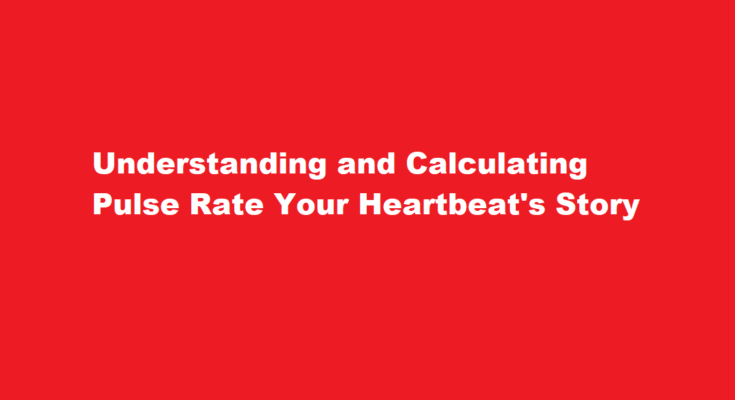Introduction
The pulse rate, a fundamental indicator of cardiovascular health, reflects the rhythmic throbbing of your heart’s contractions. Measured in beats per minute (BPM), pulse rate offers valuable insights into your overall well-being. Whether you’re an athlete monitoring fitness progress or simply curious about your body’s workings, understanding how to accurately calculate your pulse rate is crucial. This article presents a comprehensive guide to calculating pulse rate and its significance in assessing your health.
The Significance of Pulse Rate
Pulse rate is more than just a number – it’s a window into your cardiovascular system. A normal resting pulse rate for adults ranges from 60 to 100 BPM. However, this value can vary based on factors like age, fitness level, and health conditions. Monitoring pulse rate can help detect irregularities, such as arrhythmias or tachycardia, which might require medical attention. Additionally, tracking changes in pulse rate during exercise can reveal how efficiently your heart is pumping oxygenated blood to working muscles.
Calculating Pulse Rate Manually
Calculating your pulse rate manually is simple and requires a stopwatch or a watch with a second hand. Follow these steps
1. Find a comfortable place to sit and rest for a few minutes.
2. Locate your pulse points – typically the radial artery on your wrist or the carotid artery on your neck.
3. Using your index and middle fingers, lightly press on the chosen pulse point.
4. Count the number of beats you feel in 60 seconds. Alternatively, count beats for 15 seconds and then multiply by 4 to get BPM.
5. Record the obtained BPM.
Using Technology for Pulse Rate Measurement
In today’s digital age, technology offers convenient ways to measure pulse rate. Fitness trackers, smartwatches, and even smartphone apps equipped with optical sensors can provide real-time pulse readings. While these devices provide ease and accuracy, it’s crucial to ensure their calibration and reliability for precise results. Medical-grade equipment remains the gold standard for clinical applications and serious health monitoring.
Factors Influencing Pulse Rate
Various factors can influence your pulse rate. Physical activity, stress, caffeine intake, and temperature changes can lead to temporary fluctuations. Regular exercise tends to lower resting pulse rate by strengthening the heart. Conversely, illnesses, medications, and medical conditions like hyperthyroidism can elevate pulse rate. Age also plays a role, as children generally have higher pulse rates than adults. It’s important to consider these factors when interpreting your pulse rate readings.
Interpreting Pulse Rate Readings
Interpreting your pulse rate goes beyond the numbers. A consistently high resting pulse rate might suggest inadequate cardiovascular fitness or an underlying health issue. A sudden, unexplained increase in pulse rate warrants attention, especially if accompanied by symptoms like dizziness or shortness of breath. On the other hand, athletes often have lower resting pulse rates due to their well-conditioned hearts. Tracking changes over time provides a clearer picture of your heart’s health.
Frequently Asked Questions
How many methods are there for taking pulse rate?
Once you start to feel a beating in the artery, you can get your pulse in one of three ways: Count how many times you feel beats within one minute. Count how many times you feel beats within 30 seconds and multiply that number by 2. Count how many times you feel beats within 15 seconds and multiply that number by 4.
What are the 3 types of measuring pulse?
The pulse felt on the neck is called the carotid pulse. When felt on the groyne, it is called the femoral pulse. The pulse at your wrist is called the radial pulse.
Conclusion
Your pulse rate tells a unique story about your cardiovascular health. By mastering the art of calculating and interpreting pulse rate, you empower yourself to make informed decisions about your lifestyle and well-being. Regular monitoring, coupled with a proactive approach to heart health, ensures that your heart’s rhythmic symphony plays on for years to come.
Read Also : Mastering The Art of Deficit Calculation A Comprehensive Guide



